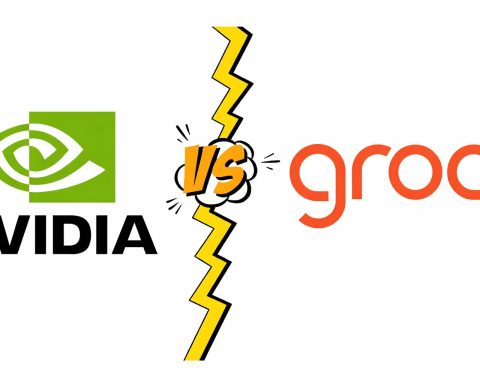- Inflation eases slightly: September’s U.S. CPI came in at a 3.0% year-on-year rise (0.3% month-on-month), just below forecasts [1]. That confirms inflation is moderating and “keeps the Fed on track to cut interest rates again next week” [2].
- Treasury yields drop: Bonds rallied on the data – the 10-year Treasury yield fell under 4% (to about 3.97%) and 2-year yields dipped ~5 basis points, driving prices higher [3]. The U.S. dollar softened as well on the news [4].
- Stocks jump to new highs: Equities surged on Fed-cut hopes and tech optimism. S&P 500 futures climbed ~1% premarket, lifting U.S. stock indexes toward record territory [5] [6]. Wall Street has seen ~15–18% gains year-to-date, propelled by AI-driven rallies (the S&P briefly hit ~6,754 on Oct. 8) [7].
- Winners and losers: Financials and cash-rich firms outperformed as higher yields boost lending margins [8]. Homebuilders, REITs and utilities lagged, as rising rates make mortgages and borrowing more expensive [9]. Gold retreated from recent record highs as yields firmed [10], while oil hovered near $62 amid mixed global signals.
- Fed outlook & forecasts: Markets now fully price a 25-basis-point Fed cut at the Oct 28–29 meeting [11]. Indeed, nearly all economists polled expect two more cuts this year [12]. For example, UBS projects the 10-year yield around ~4.0% by end-2025 [13]. However, some strategists caution that U.S. tech/AI stock valuations look “excessively high” and overdue for a pullback [14], even as investors “continue to pour money into equities” in this “broadly supportive environment” of falling rates [15].
The delayed September inflation report – pushed back by the U.S. government shutdown – turned out a bit cooler than expected, reaffirming the narrative that price pressures are easing. The Labor Department said headline CPI rose 0.3% in September (3.0% year-on-year), slightly under the 0.4%/3.1% that economists had forecast [16]. Core CPI (excluding food and energy) was up 3.0% YoY (vs 3.1% expected). Wall Street greeted the news calmly, since even at 3% inflation remains above the Fed’s 2% goal. What mattered more was that the softer reading bolsters confidence in near-term rate cuts: U.S. futures now fully price in a quarter-point cut next week [17], and a Reuters poll found virtually all economists expect two cuts by year-end [18]. In its commentary, Reuters notes that the report “keeps the Fed on track to cut interest rates” again [19].
With Fed easing on the horizon, bond traders bid up Treasuries. The 10-year yield eased from ~4.0% just before the data to roughly 3.97% after [20] – the first sub-4% close in over a year [21]. Two-year yields (highly sensitive to Fed policy) fell about 5 basis points. The U.S. dollar index dipped (around 98.9) after early gains [22]. This put long-term borrowing costs a tad lower: for example, 30-year mortgage rates stayed near 6.2%, slightly below recent highs [23] (still far above the 3% lows of a few years back). In summary, bonds rallied hard on the cooling CPI, even though inflation is still elevated.
At the same time, stock markets rallied further. U.S. futures jumped into Friday, adding roughly 1% as traders celebrated the “reprieve” on inflation. Tech-heavy Nasdaq futures led, while the S&P 500 and Dow were also solidly higher [24]. Thursday’s close had seen all three major indexes record gains (Dow +0.5%, S&P +0.7%) amid easing trade tensions [25], and Friday’s session extended that move. The AI-led run in large-cap tech has driven indexes to all-time highs: as noted by TS2.tech, the S&P 500 recently hit a record ~6,754 [26]. Over the week, the MSCI World and major U.S. benchmarks were on pace for further gains.
“Equities are enjoying a broadly supportive environment,” observes Peter Fitzgerald, CIO for macro at Aviva Investors: “interest rates are broadly coming down… volatility after a brief spike has started to come down again, there’s no major earnings surprises” [27]. In other words, with Fed cuts looming and no big bad news, stocks are trending higher. However, others warn the party may be frothy. The Bank of England recently cautioned that U.S. tech/AI stocks look “excessively high” and vulnerable to a “sudden correction” [28]. Indeed, analysts are asking if this rally is “signs of a bubble” at the intersection of easy Fed policy and an AI boom [29]. Notably, Wharton professor Jeremy Siegel argues that if inflation keeps cooling, the Fed can “gently lower rates and extend the expansion,” a benign view in contrast to bearish warnings [30].
On the sector front, financial stocks outperformed as banks and insurers benefit from higher rates on loans [31]. Large banks (JPMorgan, BofA) should see net interest margins expand if lending rates stay higher than deposit rates [32]. By contrast, borrowers and rate-sensitive industries felt the squeeze. Homebuilders (e.g. D.R. Horton, Lennar) and REITs have “the wind taken out of their sails” as mortgages get pricier [33]. Utilities and infrastructure firms – which rely heavily on cheap financing – underperformed for the same reason [34]. Even tech giants with big cash piles are not immune if investors rotate into value, though names like Apple and Microsoft remain broadly bid in this environment. Precious metals gave back some ground: gold eased from its September record ($4,300/oz) as real yields crept up [35]. Oil prices (around $62-63) were little changed on the day amid mixed demand signals and sanctions news.
Looking ahead, all eyes are on the Fed meeting Oct. 28–29. The central bank is almost certain to trim its policy rate by 25 basis points to 3.75–4.00%, as priced in by markets [36]. A Reuters poll shows 115 of 117 economists see that cut happening [37], and futures currently imply another cut in December. Fed officials have been split on policy: as HSBC’s Ryan Wang notes, “half of the FOMC is more focused on the labor market and the other half on inflation risks” [38]. For now, the labor-market concerns appear to be winning – Powell & Co. have emphasized their “meeting-by-meeting” approach, guided largely by jobs data [39]. With hiring slowing (monthly payroll gains down to only ~25,000), the Fed is erring on the dovish side even as inflation is above target.
Market strategists offer mixed forecasts. Many expect moderate growth and two total rate cuts by year-end [40]. UBS, for example, predicts the 10-year yield around 4.0% at end-2025 (falling to ~3.75% by mid-2026) as growth cools [41]. By contrast, heavy U.S. deficits or any renewed inflation surge (e.g. from tariffs) could push yields higher again [42]. On the equity side, forecasts remain lofty: Goldman Sachs targets the S&P near 6,800 by year-end, and RBC pegs it around 7,100 by 2026 [43]. But with stock valuations high, even bulls watch the Fed’s next moves closely. “It’s always impossible to predict when a bull market is going to end,” adds Fitzgerald, but he notes any correction might come from a stumble in the tech/AI giants [44].
In summary, cooler-than-expected inflation and fading trade tensions have ignited a bond rally and kept the Fed on pace to cut rates. Bonds and stocks have both taken the “good news” – at least for now. Investors will next watch October’s inflation data (as soon as it’s released) and the Fed’s policy statement. Any sign of resurgent price pressures or labor-market overheating could reverse today’s moves; conversely, further soft prints will reinforce expectations of an easing Fed and could drive yields even lower. For now, bond traders and equity investors alike are betting on lower rates – a rally that has, as one observer puts it, the feel of an AI-era “Goldilocks” market, for better or worse [45] [46].
Sources: U.S. Treasury and CPI data; Reuters, Bloomberg, CNBC, Investopedia and TS2.tech market reports [47] [48] [49] [50] [51].
References
1. www.reuters.com, 2. www.reuters.com, 3. www.bloomberg.com, 4. www.reuters.com, 5. www.investopedia.com, 6. www.reuters.com, 7. ts2.tech, 8. ts2.tech, 9. ts2.tech, 10. ts2.tech, 11. www.reuters.com, 12. ts2.tech, 13. ts2.tech, 14. ts2.tech, 15. www.reuters.com, 16. www.reuters.com, 17. www.reuters.com, 18. ts2.tech, 19. www.reuters.com, 20. www.bloomberg.com, 21. www.bloomberg.com, 22. www.reuters.com, 23. ts2.tech, 24. www.investopedia.com, 25. ts2.tech, 26. ts2.tech, 27. www.reuters.com, 28. ts2.tech, 29. www.reuters.com, 30. ts2.tech, 31. ts2.tech, 32. ts2.tech, 33. ts2.tech, 34. ts2.tech, 35. ts2.tech, 36. www.reuters.com, 37. www.reuters.com, 38. www.reuters.com, 39. ts2.tech, 40. ts2.tech, 41. ts2.tech, 42. ts2.tech, 43. ts2.tech, 44. www.reuters.com, 45. ts2.tech, 46. www.reuters.com, 47. www.reuters.com, 48. www.bloomberg.com, 49. www.investopedia.com, 50. ts2.tech, 51. ts2.tech







